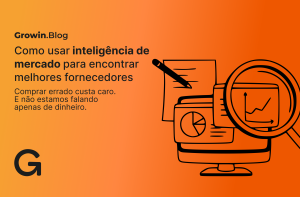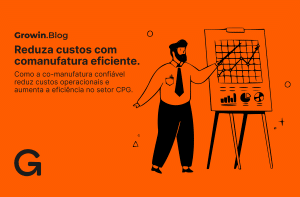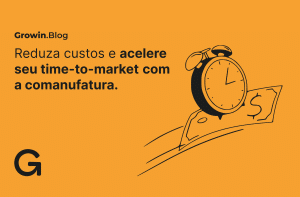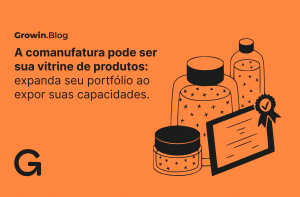A PESTEL analysis is a strategic framework used to assess the business environment in which a manufacturer operates. In the past, it was commonly known as a PEST analysis, representing Political, Economic, Social, and Technological factors. However, it has evolved to encompass Environmental and Legal factors as well. PESTEL analyses are effective tools for analyzing potential threats and opportunities that can influence strategic evaluations, planning, and decision-making.
Packaging Trends
The packaging industry in Latin American has been witnessing significant developments and evolving trends in recent years. Several factors are influencing these changes, including shifting consumer preferences, sustainability concerns, technological advancements, and regulatory developments. Here are some of the latest trends in packaging for the region:
Political
The conflict in Ukraine still affects trade and international relations. Meanwhile, OPEC’s stranglehold on crude production has been negatively impacting on consumers’ purchasing power.
The global political landscape is overshadowed by the instability among major government leaders and the upcoming 2024 US presidential election. Additionally, there is a significant concern about the possibility of a global recession.
Although the global COVID-19 pandemic is nearing its end, the extreme political polarization surrounding the disease, as well as discussions regarding quarantine and vaccine mandates, have led to lasting divisions among consumers.
37% of US consumers say they have lost friends due to conflicting political beliefs
How political factors can impact the packaging industry?
Now: prepare for regulatory increase
Get ready for an uptick in regulations as lawmakers aim to leverage legislation to drive social and environmental change. Encouraging consumers to adopt more sustainable consumption practices and improving the collection of recyclable packaging are some of the approaches legislators are exploring to achieve their goals.
Next: consumers won’t sit idly by
Consumers are not expected to passively accept the introduction of initiatives such as deposit schemes, which may bring about additional inconveniences or expenses during the purchasing process.
Future: take a stand on future mandates
With the growing realization of the importance of environmental initiatives, consumers are no longer content with brands simply meeting the minimum legal requirements. Instead, consumers are actively seeking brands that demonstrate environmental and social leadership and actively advocate for legislative changes that contribute to a better future.
ECONOMIC
The global economy is in flux. Supply chain issues linger, labor shortages persist and inflation is rising. This economic uncertainty and the associated rising cost of goods have forced consumers to rethink budgets and discretionary spending, creating the need for more value-based options.
40% of Brazilian consumers* say the phrase “I have a budget that I try to stick to as much as possible” describes them well
What economic factors mean for packaging?
Now: guide consumers toward value
On the heels of the global pandemic, markets have been rocked by rising food and fuel prices. With double digit inflation common among G20 nations, consumers will look to brands to help them overcome economic-induced stresses by introducing products that mesh with their purchasing abilities and that reflect value without compromising.
Next: help consumers maximise resources
As national economies remain strained, one differentiator at the point of sale will be packaging that represents financial value propositions while not compromising quality, convenience, freshness, safety and environmental responsibility (an emphasis on ‘and’ vs ‘or’).
Future: provide flexibility of choice
Brands and package manufacturers who can offers consumers a wider selection of size, format and price point will create demand, build equity and make repeat purchase considerations all that much easier.
SOCIAL
Consumers are less trusting of companies, of governments and of institutions than ever before and are less likely than ever to take brands at their word when they say they’re doing the right thing, or anything close to what they are claiming.
With growing concerns about a range of issues, including food availability, ethical sourcing, equitable pay and responsible use of water and land, consumers want to know more about the products they buy and the brands they’re buying from.
In addition to spotlighting their achievements and strengths, brands and package manufacturers have to be more transparent about their weaknesses and how they plan to address them.
Consumers are pursuing transparency through clearer labeling, specifically what labeling claims mean for the greater good.
59% of consumers* in Mexico say the statement “I find myself wanting to learn more about brands, social matters etc” describes them well
What social factors mean for packaging?
Now: be transparent
It’s time to stop making commitments to change at some point in the future, specified or not. Provide clarity about the responsible actions you are undertaking and the benefits they are delivering now. Be honest and transparent about the challenges and obstacles that you face in delivering the ‘perfect’ package.
Next: make a stand
Packaging today paints a picture of a brand’s equity, which increasingly includes social capital alongside environmental issues. Consumers want to hear what retailers, brands and package manufacturers have to say about controversial topics related to diversity, inclusion and equity.
Future: define your targets
Brands must demonstrate their progress towards ethical goals. By aligning such progress with clear and measurable third-party targets, such as the UN Sustainable Development Goals, brands can earn the trust of consumers who are increasingly scrutinizing ethical practices.
TECHNOLOGICAL
Consumers are becoming fatigued as a result of the fast pace of daily life, increased use of technology and having to move from crisis to crisis, requiring the assistance of brands.
This rapid advance of technology leaves consumers unconvinced of its actual benefits in spaces like the metaverse, NFTs or cryptocurrencies, which can make them feel disengaged.
Led by curiosity, excitement and a desire to be informed and entertained, many individuals are spending increased amounts of time on the Internet. Whether it involves developing their personal brand, entrepreneurial projects, socializing, play or gaining a better understanding of environmental issues, consumer expectations are creating a demand for increased immersion. Digital experiences are rapidly expanding to include social media, AI and the metaverse, especially as a means of content consumption and entertainment.
In India, 49% of consumers who participate in beauty communities* enjoy connecting with other members of a brand community on a digital platform.
What technological factors mean for packaging?
Now: focus on functionality
The use of QR codes throughout the COVID-19 pandemic has lowered the barrier to use of this technology.
However, avoid the temptation to dazzle with interactive gizmos that deliver nothing beyond a gimmick. Consider how smart packaging can add value through providing the right information/support at the right moment.
Next: align with the influencers
As consumers increasingly shop online, and even shop directly through social media, consider how packaging design can appeal to the influencer. Be agile enough to respond to those viral memes and trends, getting limited-edition pack designs and functionalities to market before the consumer has moved onto something new.
Future: design for connection
The virtual assistant in every home is a gateway for households to become ever smarter. Ensure packaging can communicate to smart appliances to improve the use/consumption experience and drive product efficiencies. Consider how packaging design can be translated into the metaverse.
Environmental
Climate change is a defining global threat today, with consequences that are fueling environmental degradation, natural disasters, weather extremes and food and water insecurity.
As many as 70% of consumers in some markets are convinced there is still time to save the planet. In other markets, more than half say responsibility for doing so falls on manufacturers even more than governments.
As these issues are increasingly put in front of consumers, brands must provide climate-friendly consumption choices, and package manufacturers should deliver packaging alternatives that are easily understood by, and actionable on the part of, consumers.
These decisions will increasingly be based not on individual sustainability comparisons, but on the larger impact of carbon and how to reduce the total carbon footprint of their lifestyles and purchasing decisions.
45% of consumers in Australia rank climate change and global warming among their top three environmental concerns
What environmental factors mean for packaging
Now: everything recyclable
Despite the majority of recycling systems being broken, recycling remains the most understood and actionable (if not effective) means for consumers around the world to do something they believe is better for the environment.
Next: explain actions and results
There is no excuse or substitute for transparency, especially third-party validated transparency.
Future: do more with less, and more for all
Going forward, such big-picture issues as climate change, soil and water use, as well as attention to poverty and hunger, will be part of a strategy brands must embrace, which will become as important to purchase decisions as the product or package.
LEGAL
Myriad national, federal and local laws have been enacted to protect consumers from unfair, deceptive or fraudulent business practices. In recent years, more rules and restrictions have been enacted to protect the health and safety of consumers, accelerated by the COVID-19 pandemic. In addition, new rules around the use of plastics and materials that contribute to pollution and human and planetary health will have an effect on consumers. Across the US, plastic bag laws, extended producer responsibility (EPR) and forever chemical (PFAS) laws are being enacted and enforced.
Key regulatory issues affecting businesses and consumers include: health and safety, workplace safety, cybersecurity, paid leave, retirement, tax changes, healthcare reform, pay equity, worker classification and employee privacy.
85% of Chinese consumers* are prepared to boycott companies who behave unethically
What legal factors mean for packaging
Now: listen, learn, act
A firm grip on current legislation, its origins and what’s in the crosshairs of legislators, particularly around plastics, PFAS and EPR, will enable brands and package manufacturers to not be caught off guard.
Next: expect more of the same
No doubt consumers will rally behind legislation that, on the surface, appears to benefit the environment. That consumer support will spur additional bans, which likely will put significant cost pressure on manufacturers in their quest to meet mandates and find suitable, yet potentially more costly, alternatives.
Future: go further with industry partnerships
It is well established that packaging bans are often based as much on consumer misperception as on science. Going forward, partnerships among retailers, brands, package manufacturers and NGOs must become more visible, vocal and consumer-centric to be effective when it comes to package laws.
Source: Mintel




